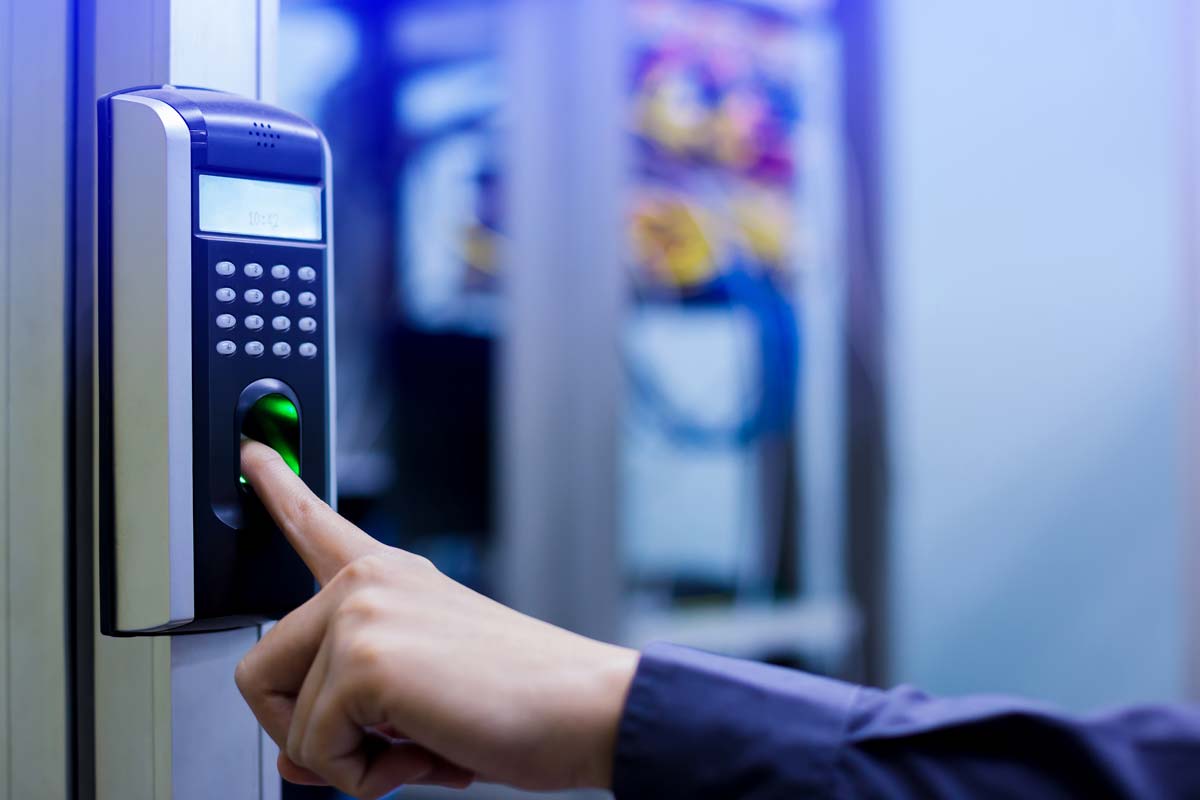Security has become an important aspect of the modern workplace. An effective security system in place will play a huge role in improving the effectiveness of your production line. Otherwise, you risk exposing your sensitive assets, such as business and customer data, and endangering your physical workforce.
Technological advancement has played a huge role in revolutionizing modern businesses. However, it has also led to the introduction of complex and effective cyberattacks, which can compromise the integrity of your security architecture. For this reason, it’s important you understand how you can improve your office security, saving your workforce and sensitive data from complicated threats out there.

The following article discusses what you need to know about the office security system. You’ll learn the common threats, how to improve your overall office security, and more.
What are the threats to office security?
A business has several assets to protect and safeguard, such as sensitive data (customer and inventory documents), computer systems, physical workforce, and more, regardless of size. Failure to protect such assets may compromise the integrity of your security system and expose them to ever-evolving threats. Some of the common threats to office security include:
1. Burglary and theft.
This is one of the risks that might compromise your office security system. Individuals may physically break into your office and steal assets such as computer systems, funds, physical documents, and other sensitive items.
They might also harm any present team member, affecting overall productivity. Virtual assets can be stolen too. Hackers and people with malicious reasons may infiltrate your network systems and steal digital documents, business secrets, and more, destroying your competitive advantage.

However, it’s important to understand that theft doesn’t necessarily come from third parties. Some dishonest team members may steal both your physical and virtual assets. It’s important, however, to protect your company assets regardless.
2. Vandalism.
This is another threat that might affect your security architecture. Sometimes, an unauthorized person may access your company assets and destroy or deface them. This could result in all the important documents being rendered useless.
3. Extortion.
An attacker can corrupt your network system and restrict you from accessing your organization’s necessary networks, data, or assets. Besides increasing the chances of downtime, extortion may also affect your profit margin.
If any of the above threats attack your office security, your production line will surely be disrupted at the very least. In extreme situations, these threats may negatively impact your bottom line and sometimes force you out of business.
How to improve your office security architecture.
Now that you understand the common threats your organization might experience, its now time to understand how you can improve your overall security this year. The following are ways to boost your office security, protecting the essential aspects of your business. They include the following:
1. Invest in the right technology.
Over the years, there have been many technologies you can integrate into your office operations, protecting your assets and physical workforce. They include:
1.1. Intrusion detection systems.
This is one technology you can consider integrating into your office operations. For virtual systems, intrusion and detection tools notify you when an unauthorized person tries to access your networks.
Over the years, many service providers have offered intrusion and detection tools. Due to many options, getting the right one for your office operations can take time. However, consider reaching out to Castra or any reputable local provider to outsource the services. It is important, however, you conduct enough background checks to gauge whether they’ll meet your needs and expectations.
You can install alarm systems for physical assets to notify you when a person illegally accesses your office. You can integrate this system into your mobile devices; thus, you can easily monitor your office space regardless of time.
1.2. Cloud services.
Investing in cloud services makes it easier for authorized teams to access business resources, regardless of location, securely. With cloud services, all data is stored in a secure, central location, which makes it easier for the IT department to monitor and manage the security of the data. Cloud services also use encryption to protect data both in transit and at rest. This means that even if a hacker gains access to the data, it will be unreadable without the encryption keys.
You can also integrate other advanced solutions, such as multi-factor authentication and encryption, to protect data while in transit and encourage collaboration and teamwork. With the increasing use of cloud services, it has become easier for companies to improve their security systems and reduce the risk of data breaches and cyber-attacks.
1.3. Install door access system.
As discussed above, unauthorized personnel or third parties may physically access your office. They may steal or destroy your office assets and harm your team members. For this reason, investing in the right door access control is important.

One of the ways to control door access is the introduction of ID badges and biometric authentication. ID badges are a great way to verify who you’re letting into your office premises and facilities. Employees with an official badge can easily verify their identity on the terminal system, thus accessing the allowed spaces. For visitors, require them to return the issued badges to avoid access issues in the future.
Despite the system you use to control door access, it’s important to ensure you can monitor it in real time, regardless of where you are. Additionally, it should give a detailed audit trail that you can use in case of a security breach. Other features to include in your door access control are remote management capability, touchless features, video capabilities, and more.
Despite the many benefits of integrating technology advancement into your office operations, it’s crucial to understand that it’s a costly investment and may leave a huge dent in your savings. Therefore, it’s important to conduct enough research to develop a deeper insight into your production line, making it easier for you to choose the right technology. Otherwise, you risk investing in obsolete technology, and you end up losing your hard-earned cash.
2. Train your workforce.
Your workforce plays a huge role in ensuring you meet your objectives and expectations. However, they can also expose you to threats if they’re not properly trained. Thus, it’s important to integrate training programs into your office operations. Some of the benefits of training your workforce include:
2.1. Understand security guidelines.
A properly-trained workforce will have a deeper insight into your guidelines. This includes ensuring the doors are always closed to prevent unauthorized access and avoiding opening suspicious emails, attachments, links, etc. This will go a long way in boosting your organization’s security architecture.
2.2. Understand emergency response.
When a threat has already infiltrated your security system, the emergency response plan will help prevent further damage.
For instance, in a virtual attack, the emergency response plan helps the team members recover lost data, saving you considerably in the long run.
It’s important, however, to treat the training programs as part of the production process rather than a separate entity on its own.
As a business owner, you can offer the training services in-house or outsource them from a reputable provider. The major benefit of outsourcing the training program is that a reputable provider has enough skills and tools to train your team members, boosting your overall security effectively.
3. Ensure regulatory compliance.
Complying with the set rules and regulations may go a long way in boosting your overall office security. If you don’t comply with the rigid guidelines and policies, you risk exposing your assets to fraudulent individuals out there.
When training your team members, ensuring they fully understand your security policies is important. Thus, it’ll be easier for them to comply with the set rules when utilizing your office space. Besides, it’ll save you from non-compliance fines and penalties, which could affect your expenses.
Another way to ensure regulatory compliance is by integrating the right technology, such as artificial intelligence (AI), to automate your office processes. For instance, on detection immediately call to emergency departments like police system.

When you’re using manual effort to manage your office operations, there are high chances you might make an error, forget to take precautionary actions, exposing you and your assets to complicated threats such as phishing. However, an automated system reduces human error. Additionally, it’ll keep up with ever-changing policies and guidelines, boosting your office security system.
4. Talk to a security expert.
An expert has the necessary skills which will come in handy when boosting your security architecture. They are knowledgeable to many known issues.
Please invite an expert to assess your office security and identify its weaknesses. Also, they’ll advise on the right security measure to implement in your office, protecting your physical and virtual assets and your team members.
In summary.
As discussed above, office security has become a crucial aspect of modern business. There are so many ways you can use to improve your office security this year. They include investing in the right technology, training your workforce, ensuring everything is regulatory compliant, and seeking an expert’s advice. For this reason, it’s important to research extensively to ensure you choose the right tools for your office operations, boosting overall security architecture.
Leave a Reply